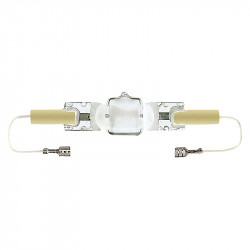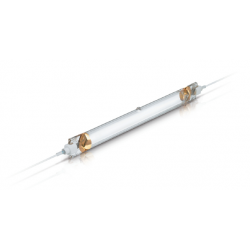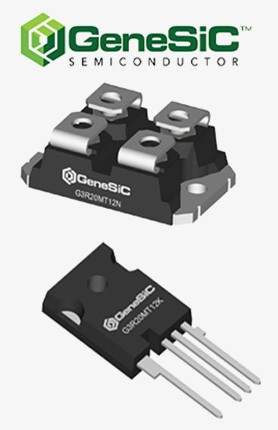-
BackX
-
Components
-
-
Category
-
Semiconductors
- Diodes
- Thyristors
-
Electro-insulated Modules
- Electro-insulated Modules | VISHAY (IR)
- Electro-insulated Modules | INFINEON (EUPEC)
- Electro-insulated Modules | Semikron
- Electro-insulated Modules | POWEREX
- Electro-insulated Modules | IXYS
- Electro-insulated Modules | POSEICO
- Electro-insulated Modules | ABB
- Electro-insulated Modules | TECHSEM
- Go to the subcategory
- Bridge Rectifiers
-
Transistors
- Transistors | GeneSiC
- SiC MOSFET Modules | Mitsubishi
- SiC MOSFET Modules | STARPOWER
- Module SiC MOSFET ABB’s
- IGBT Modules | MITSUBISHI
- Transistor Modules | MITSUBISHI
- MOSFET Modules | MITSUBISHI
- Transistor Modules | ABB
- IGBT Modules | POWEREX
- IGBT Modules | INFINEON (EUPEC)
- Silicon Carbide (SiC) semiconductor elements
- Go to the subcategory
- Gate Drivers
- Power Blocks
- Go to the subcategory
- Electrical Transducers
-
Passive components (capacitors, resistors, fuses, filters)
- Resistors
-
Fuses
- Miniature Fuses for electronic circuits - ABC & AGC Series
- Tubular Fast-acting Fuses
- Time-delay Fuse Links with GL/GG & AM characteristics
- Ultrafast Fuse Links
- Fast-acting Fuses (British & American standard)
- Fast-acting Fuses (European standard)
- Traction Fuses
- High-voltage Fuse Links
- Go to the subcategory
- Capacitors
- EMI Filters
- Supercapacitors
- Power surge protection
- TEMPEST emission revealing filters
- Surge arrester
- Go to the subcategory
-
Relays and Contactors
- Relays and Contactors - Theory
- 3-Phase AC Semiconductor Relays
- DC Semiconductor Relays
- Controllers, Control Systems and Accessories
- Soft Starters and Reversible Relays
- Electromechanical Relays
- Contactors
- Rotary Switches
-
Single-Phase AC Semiconductor Relays
- AC ONE PHASE RELAYS 1 series| D2425 | D2450
- One phase semiconductor AC relays CWA and CWD series
- One phase semiconductor AC relays CMRA and CMRD series
- One phase semiconductor AC relays - PS series
- Double and quadruple semiconductor AC relays - D24 D, TD24 Q, H12D48 D series
- One phase semiconductor relays - gn series
- Ckr series single phase solid state relays
- One phase AC semiconductor relays for DIN bus - ERDA I ERAA series
- 150A AC single phase relays
- Rail Mountable Solid State Relays With Integrated Heat Sink - ENDA, ERDA1 / ERAA1 series
- Go to the subcategory
- Single-Phase AC Semiconductor Relays for PCBs
- Interface Relays
- Go to the subcategory
- Cores and Other Inductive Components
- Heatsinks, Varistors, Thermal Protection
- Fans
- Air Conditioning, Accessories for Electrical Cabinets, Coolers
-
Batteries, Chargers, Buffer Power Supplies and Inverters
- Batteries, Chargers - Theoretical Description
- Modular Li-ion Battery Building Blocks, Custom Batteries, BMS
- Batteries
- Battery Chargers and Accessories
- Uninterruptible Power Supply and Buffer Power Supplies
- Inverters and Photovoltaic Equipments
- Energy storage
- Fuel cells
- Lithium-ion batteries
- Go to the subcategory
-
Automatics
- Spiralift Lifts
- Futaba Drone Parts
- Limit Switches, Microswitches
- Sensors, Transducers
-
Infrared Thermometers (Pyrometers)
- IR-TE Series - Water-proof Palm-sized Radiation Thermometer
- IR-TA Series - Handheld Type Radiation Thermometer
- IR-H Series - Handheld Type Radiation Thermometer
- IR-BA Series - High-speed Compact Radiation Thermometer
- IR-FA Series - Fiber Optic Radiation Thermometer
- IR-BZ Series - Compact Infrared Thermometers
- Go to the subcategory
- Counters, Time Relays, Panel Meters
- Industrial Protection Devices
- Light and Sound Signalling
- Thermographic Camera
- LED Displays
- Control Equipments
- Go to the subcategory
-
Cables, Litz wires, Conduits, Flexible connections
- Wires
- Cable feedthroughs and couplers
- Litz wires
-
Cables for extreme applications
- Extension and Compensation cables
- Thermocouple cables
- Connection cables for PT sensors
- Multi-conductor wires (temp. -60C to +1400C)
- Medium voltage cables
- Ignition wires
- Heating cables
- Single conductor cables (temp. -60C to +450C)
- Railway cables
- Heating cables Ex
- Cables for the defense industry
- Go to the subcategory
- Sleevings
-
Braids
- Flat Braids
- Round Braids
- Very Flexible Flat Braids
- Very Flexible Round Braids
- Cylindrical Cooper Braids
- Cylindrical Cooper Braids and Sleevings
- Flexible Earthing Connections
- PCV Insulated Copper Braids (temp. up to 85C)
- Flat Aluminium Braids
- Junction Set - Braids and Tubes
- Steel Braids
- Go to the subcategory
- Traction Equipment
- Cable Terminals
- Flexible Insulated Busbars
- Flexible Multilayer Busbars
- Cable Duct Systems
- Go to the subcategory
- View all categories
-
Semiconductors
-
-
- Suppliers
-
Applications
- CNC Machine Tools
- DC and AC Drives (Inverters)
- Energetics
- Energy bank
- Equipment and Components for Hazardous Areas [Ex]
- Equipment for Distribution, Control and Telecommunications Cabinets
- HVAC Automation
- Induction Heating
- Industrial Automation
- Industrial Protective Devices
- Machines for Drying and Wood Processing
- Machines for Thermoforming Plastics
- Mining, Metallurgy and Foundry
- Motors and Transformers
- Power Supplies (UPS) and Rectifier Systems
- Printing
- Temperature Measurement and Regulation
- Test and Laboratory Measurements
- Tram and Railway Traction
- Welding Machines
-
Assembly
-
-
Inductors
-
-
Induction devices
-
-
Service
-
- Contact
- Zobacz wszystkie kategorie
UV Lamps
UV Emitters: Ultraviolet Technology in the Service of Disinfection and Industry
Ultraviolet (UV) emitters are advanced devices that emit electromagnetic radiation invisible to the human eye, which has a shorter wavelength than visible light (below 400 nm). Although UV radiation...
UV Emitters: Ultraviolet Technology in the Service of Disinfection and Industry
Ultraviolet (UV) emitters are...
| Image | View the product | No. Manufacturer | ||||||
|---|---|---|---|---|---|---|---|---|
| picture_as_pdf |

|
Philips | UV radiators | SEE IT | -- | On Order | -- | -- |
| picture_as_pdf |

|
-- | HOK20 / 100 UV radiator | SEE IT | HOK20/100 | On Order | 9,6 A | 2100 W |
UV Emitters: Ultraviolet Technology in the Service of Disinfection and Industry
Ultraviolet (UV) emitters are advanced devices that emit electromagnetic radiation invisible to the human eye, which has a shorter wavelength than visible light (below 400 nm). Although UV radiation naturally reaches Earth from the Sun, specialized emitters generate it in a controlled and concentrated manner, mainly for technological, medical, and sanitary purposes. Unlike infrared (IR) emitters, which focus on delivering heat, UV emitters utilize their unique properties to destroy microorganisms and initiate chemical reactions.
The Principle of UV Emitters – Power in Invisible Light
The key to the operation of UV emitters is the wave range called UV-C (with a wavelength from 100 to 280 nm), and especially the wavelength of about 254 nm (nanometers). Radiation in this range has a strong bactericidal and virucidal effect. This is because the energy of UV-C radiation is absorbed by the nucleic acids (DNA and RNA) of microorganisms. This absorption leads to damage to their genetic material, which prevents them from replicating and multiplying. As a result, bacteria, viruses, molds, and fungi become inactive, allowing sterile conditions to be achieved without the need for chemicals.
Basic Types and Ranges of UV Radiation
Ultraviolet radiation is divided into three main ranges, each with different properties and applications:
- UV-A (315-400 nm): The longest UV wave, mainly used for curing photosensitive materials, such as varnishes, adhesives, and resins. It is also used in tanning lamps and for inducing fluorescence (e.g., in banknote verification).
- UV-B (280-315 nm): The medium wave, in small doses is necessary for vitamin D synthesis, but in excess can cause sunburn. It is used less frequently in technology.
- UV-C (100-280 nm): The shortest wave, with a strong disinfecting (germicidal) effect. Due to its harmfulness to living cells, UV-C emitters require careful use, away from people and animals, or in closed chambers.
Key Applications of UV Emitters in Various Industries
Thanks to their unique properties, UV emitters have become an indispensable element of many industrial, medical, and municipal processes.
Disinfection of Water and Air
One of the most common applications of UV emitters is water sterilization. Water flows through a special chamber where it is exposed to UV-C radiation, which effectively eliminates pathogens without changing the taste, smell, or chemical composition of the liquid. This is an ecological alternative to chlorination. UV emitters are also widely used for air disinfection in hospitals, clinics, offices, schools, and in the food industry, often in the form of flow lamps, where UV-C rays do not escape outside.
Curing of Photosensitive Materials (UV Curing)
UV emitters, mainly in the UV-A range and partially UV-B, are crucial in curing processes. They are used for the instantaneous drying of varnishes, paints, adhesives, resins, and putties (especially in printing, automotive, and electronics production). UV radiation initiates polymerization – a chemical reaction that transforms the liquid material into a durable, hardened coating in just a few seconds. This allows for a significant reduction in production time compared to traditional drying methods.
Specialist and Cosmetic Applications
UV emitters are also used in:
- Cosmetology: for curing hybrid varnishes and nail gels.
- Aquarium and terrarium keeping: to provide the appropriate light spectrum for animals and for water disinfection in aquariums.
- Laboratory analysis and forensics: for detecting fluorescent substances.
UV Emitters vs. IR Emitters – Basic Differences
Although UV and IR emitters belong to electromagnetic radiation, they differ fundamentally in wavelength and function.
IR (Infrared) emitters emit waves with a wavelength from 780 nm to 1 mm, which are perceived as heat. Their main task is to heat objects and people. They operate on the principle of heat energy transfer. They are safe for controlled use for heating purposes, e.g., in halls or on terraces.
UV (Ultraviolet) emitters emit waves with a wavelength below 400 nm. Their function is primarily sterilization (UV-C) or curing (UV-A). They do not provide heat to a noticeable degree. UV-C radiation is dangerous for eyesight and skin, and therefore requires strict safety measures.
Safety of Using UV Emitters
Due to the high energy and harmfulness of UV-C radiation to DNA, adherence to safety rules is extremely important:
- Direct exposure of skin and eyes to UV-C radiation should be avoided.
- Emitters used for direct-action room disinfection must be switched on in the absence of people and animals.
- In professional applications (e.g., curing), appropriate personal protective equipment, such as goggles and protective clothing, must be used.
UV emitters are an advanced technology that, when used as intended and with caution, offers unparalleled possibilities in sterilization and modern production processes. Their role in ensuring cleanliness and technological efficiency is constantly growing.



